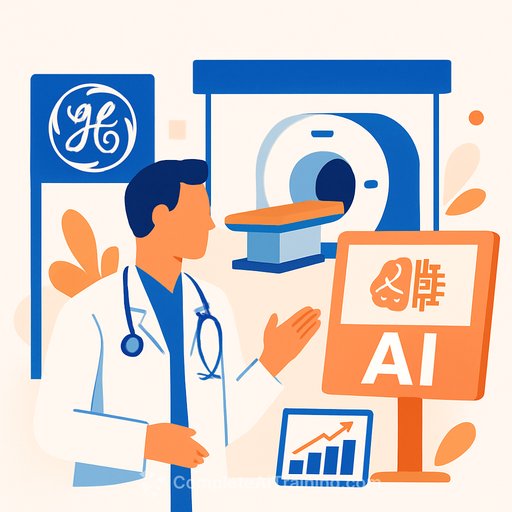Introduction
Microsoft is accelerating its bid to catch up in AI by broadening its healthcare push and striking strategic partnerships, including a notable deal with Harvard. The goal: reduce reliance on OpenAI and cultivate a broader consumer base for its Copilot chatbot. The moves signal a shift from enterprise-centric integration to a more diversified AI platform, blending research, healthcare applications, and everyday AI assistants.
Key Drivers Behind Microsoft’s Strategy on AI Push in Healthcare
- Diversification beyond OpenAI: Reducing dependence on a single partner reduces risk and expands the AI ecosystem’s appeal to different industries and consumer segments.
- Healthcare as a growth engine: Healthcare offers high-stakes use cases for AI, from clinical decision support to patient engagement, potentially unlocking substantial value and adoption.
- Research collaboration: Tying into academic institutions like Harvard can accelerate breakthroughs, improve data governance, and bolster trust in AI products.
- Consumer-focused Copilot ambitions: Expanding Copilot’s reach beyond enterprise productivity into consumer-oriented tasks could broaden market share and create network effects.
- Regulatory and ethical alignment: Strategic partnerships can help navigate privacy, safety, and bias concerns, building more robust governance frameworks.
Harvard Deal: What It Could Bring In AI Push in Healthcare
- Access to cutting-edge research: Collaboration with Harvard can feed Copilot with the latest clinical insights, datasets (where permissible), and academia-backed methodologies.
- Validation and credibility: A high-profile academic partnership can elevate trust in Microsoft’s AI capabilities in sensitive domains like healthcare.
- Pilot programs and real-world data: Joint pilots can demonstrate Copilot’s value in clinical settings, patient outreach, and medical education.
Healthcare Use Cases on the Horizon
- Clinical decision support: AI-assisted recommendations to augment clinician judgment while prioritizing safety and compliance.
- Patient engagement and education: Copilot-powered chat interfaces for symptom checks, appointment scheduling, and post-discharge guidance.
- Medical education and training: AI tutors or virtual simulation assistants for students and professionals.
- Administrative efficiency: AI tools to streamline coding, billing, and records management, reducing administrative burden on healthcare workers.
Implications
- Expanded user base: Moving into consumer and healthcare spaces can grow Copilot’s audience beyond enterprise users.
- Data governance and privacy emphasis: Healthcare applications heighten the need for robust privacy controls, consent mechanisms, and secure data handling.
- Competitive dynamic: Larger breadth in AI capabilities may intensify competition with other tech giants pursuing healthcare and consumer AI solutions.
- Developer ecosystem opportunities: Third-party developers could build healthcare-oriented Copilot extensions, increasing platform resilience and customization.
Potential Risks and Considerations
- Safety and accuracy in healthcare: Ensuring AI outputs are reliable and meet regulatory standards is critical to patient safety and trust.
- Data privacy and compliance: Handling health information requires strict adherence to HIPAA-like standards and cross-border data protections.
- Dependence on partnerships: While diversification is beneficial, overreliance on partner ecosystems could complicate governance and product roadmap decisions.
- Public perception and ethics: Transparent communication about AI limits, data usage, and bias mitigation will matter for user acceptance.
What Investors and Users Should Watch
- Partnership updates: New academic collaborations, pilot results, and regulatory milestones will signal progress.
- Product enhancements: Features that improve Copilot’s usefulness in healthcare workflows and consumer tasks will indicate momentum.
- Privacy and compliance developments: Any shifts in data governance, consent tools, or security certifications will be pivotal.
- Competitive moves: How other tech giants respond with healthcare AI offerings and consumer copilots could shape market dynamics.
Practical Takeaways for Stakeholders
- For developers: Explore healthcare-specific Copilot extensions with strong privacy controls and regulatory awareness.
- For healthcare providers: Monitor pilot outcomes for improvements in clinical efficiency, patient experience, and data security.
- For investors: Evaluate the diversification strategy’s effectiveness, the pace of consumer adoption, and the ROI of academia partnerships.
- For policymakers: Consider how enterprise-grade and consumer AI solutions align with healthcare safety standards and data protection laws.
Conclusion
Microsoft’s strategic push into healthcare, reinforced by a Harvard partnership and an expanded Copilot roadmap, signals a deliberate bid to diversify AI momentum beyond OpenAI and capture a broader mix of enterprise, medical, and consumer use cases. If executed with strong governance, transparent privacy practices, and solid clinical validation, this approach could broaden adoption and accelerate value creation across multiple segments.
FAQs
- Why is Microsoft pursuing healthcare partnerships?
- Healthcare presents high-impact, measurable AI use cases and an opportunity to demonstrate AI reliability in sensitive environments, potentially expanding Copilot’s appeal beyond business productivity.
- How could Harvard’s collaboration influence Copilot’s development?
- Access to research, curricula, and real-world healthcare insights can accelerate innovation, improve model safety, and bolster credibility.
- What are the main risks for an AI-focused healthcare push?
- Ensuring patient safety, data privacy, regulatory compliance, and maintaining clear boundaries on AI recommendations and data usage.
- How can Copilot’s consumer angle succeed alongside enterprise adoption?
- By offering intuitive, privacy-conscious tools that address everyday tasks (planning, learning, personal health inquiries) while maintaining enterprise-grade governance for professional use.
- What milestones would indicate progress?
- Public pilot results, regulatory clearances, new healthcare-focused features, and measurable improvements in clinician efficiency or patient outcomes.
